Overall Description
Bhutan, with its pristine Himalayan landscapes and spiritual aura, is a dream destination for nature photographers. Among the top photography spots is the iconic Tiger’s Nest Monastery (Paro Taktsang), dramatically perched on a cliffside—capturing it at sunrise or shrouded in mist offers ethereal results. Dochula Pass, with its 108 chortens framed by panoramic Himalayan views, is another breathtaking location, especially during spring when rhododendrons bloom. The serene Phobjikha Valley, home to black-necked cranes and rolling wetlands, is ideal for wide-angle shots and wildlife photography. Chele La Pass, the highest motorable road in Bhutan, provides stunning compositions of snowcapped peaks, fluttering prayer flags, and forested slopes. In the east, the Bumthang Valley reveals Bhutan's rural beauty—lush pastures, rivers, and ancient monasteries perfect for capturing the harmony between culture and nature.
For those seeking off-the-beaten-path frames, Haa Valley offers untouched charm, while Punakha Valley delivers dynamic images of river confluences and the majestic Punakha Dzong. Gangtey, with its monastery and panoramic views of Phobjikha, adds depth to any landscape portfolio. Tang Valley is another hidden treasure with traditional farms, sacred temples, and mystical forests. Finally, photographers hoping for dramatic alpine backdrops will find Mount Jomolhari Viewpoints near Drugyel Dzong and trek routes absolutely unforgettable.
Whether you're a professional with a DSLR or a casual traveler with a phone, Bhutan’s natural beauty offers limitless inspiration for photography.
Tiger’s Nest Monastery
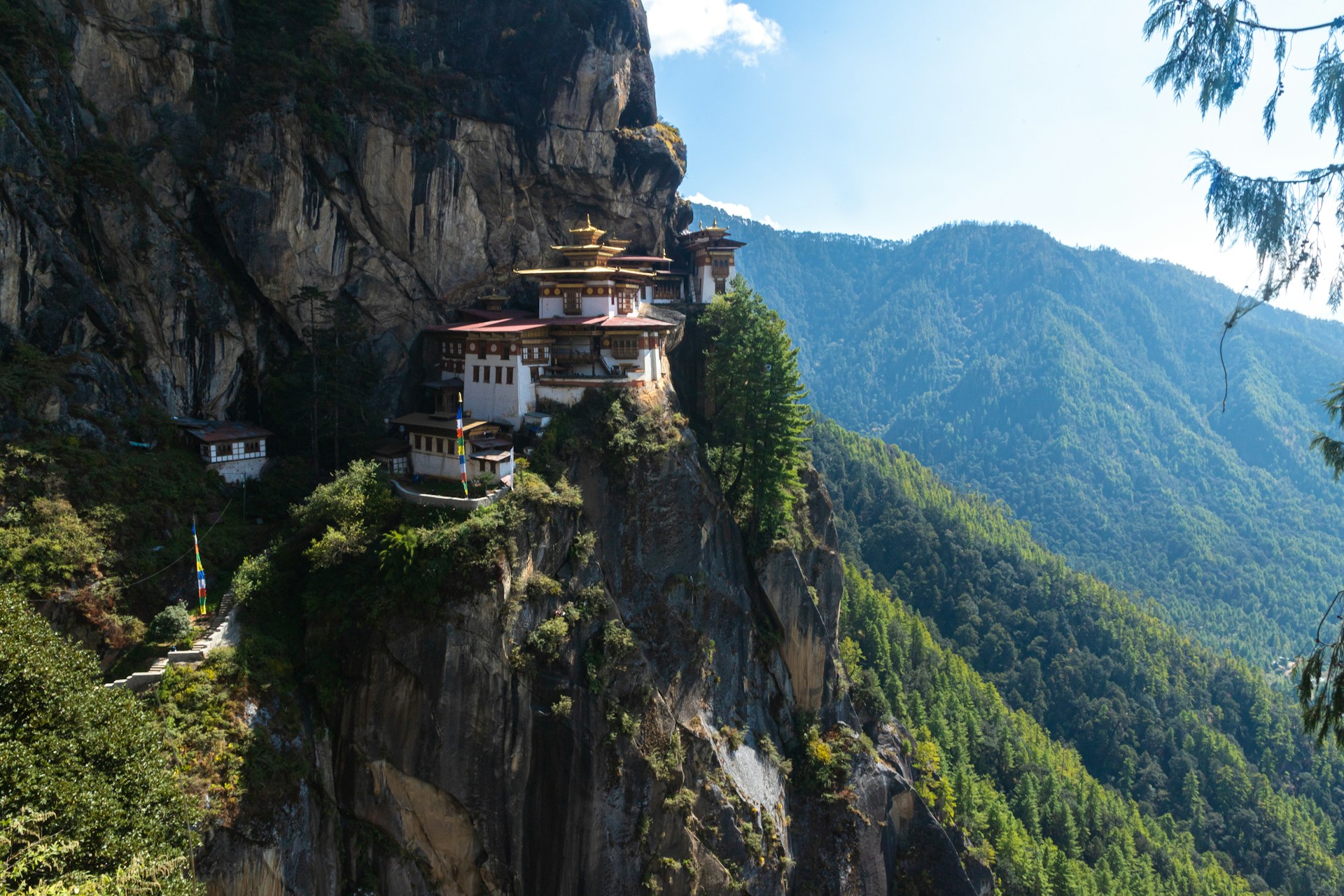
Tiger’s Nest Monastery, locally known as Paro Taktsang, is Bhutan’s most iconic and revered landmark. Perched dramatically on a sheer cliff at 3,120 meters above sea level, it overlooks the lush Paro Valley below. This sacred site appears as if suspended in the air, blending seamlessly into the rugged granite rock face. The monastery consists of white-walled temples, golden roofs, and intricately painted woodwork, connected by narrow stairways and prayer halls. It is a breathtaking example of Bhutanese architecture and spiritual devotion. The peaceful silence, the faint scent of incense, and the sound of distant chanting make the atmosphere deeply mystical and moving for every visitor.
Location of Tiger’s Nest Monastery
Tiger’s Nest is located in the upper Paro Valley of western Bhutan, about 10 kilometers north of Paro town. It sits on a vertical cliffside, nearly 900 meters above the valley floor. Though visible from the road below, the monastery can only be reached by foot or horseback. The location is symbolic—it is remote, elevated, and spiritually isolated, reflecting the Vajrayana Buddhist concept of detachment from the material world. The surrounding terrain features pine forests, fluttering prayer flags, and cascading waterfalls, all of which add to the visual drama of the site. Its proximity to Paro makes it one of the most accessible yet extraordinary pilgrimage sites in Bhutan.
Cultural and Religious Importance
Tiger’s Nest is one of the holiest pilgrimage sites in Bhutan and the Himalayas. It is believed to be the site where Guru Padmasambhava (Guru Rinpoche), the great Buddhist master who brought Tantric Buddhism to Bhutan, meditated in the 8th century. He is said to have flown here from Tibet on the back of a tigress, symbolizing the transformation of fear into enlightenment. The monastery complex houses sacred shrines, meditation caves, and relics. Bhutanese devotees undertake pilgrimages here to seek blessings, meditate, and purify karmic debts. The site plays a vital role during religious festivals, especially Paro Tshechu, when locals and monks gather in large numbers.
Hiking to Tiger’s Nest – Duration & Details
Reaching Tiger’s Nest involves a moderate to strenuous hike of approximately 5–6 kilometers round trip, taking 4–6 hours depending on pace. The hike begins at the base parking area, ascending through dense pine forests draped with moss and colorful prayer flags. Midway, hikers reach a cafeteria viewpoint, offering the first dramatic glimpse of the monastery. From there, the trail becomes steeper and includes stone steps, bridges, and cliffside paths. The final ascent includes a descent and climb across a gorge with a small waterfall. While challenging, the hike is deeply rewarding, with spiritual ambiance and panoramic views that make it one of the best treks in Bhutan.
Historical Background of Tiger’s Nest
The origins of Tiger’s Nest date back to the 8th century, when Guru Rinpoche meditated in a cave here for three years, three months, three weeks, three days, and three hours. The monastery itself was constructed later in 1692 by Gyalse Tenzin Rabgye, Bhutan’s 4th Druk Desi, to commemorate the sacredness of the site. Despite suffering damage from a fire in 1998, it was meticulously restored to its original splendor. The monastery now consists of four main temples, each containing sacred relics and images of Buddhist deities. Over centuries, it has remained a symbol of spiritual awakening and Bhutan’s deep-rooted devotion to Vajrayana Buddhism.
Monks and Worship at Tiger’s Nest
A small community of monks and meditation practitioners live and worship at Tiger’s Nest, dedicating themselves to prayer, chanting, and spiritual practice. Monks perform daily rituals inside the sacred temples, lighting butter lamps and offering incense. During festival times, elaborate pujas (ceremonial rituals) and masked dances may take place. The monastery includes meditation caves where advanced practitioners isolate themselves for prolonged spiritual retreats. Visitors can observe monks engaged in quiet devotion, reading scriptures, or guiding rituals for pilgrims. The peaceful presence of these monks reflects the living spiritual essence of Tiger’s Nest, reinforcing its role as more than just a destination—it's a sacred living space.
Natural Environment Around Tiger’s Nest
The trail to Tiger’s Nest passes through a pristine Himalayan forest rich with pine, oak, and rhododendron trees, often enveloped in mist that enhances its mystical feel. Birds sing in the canopy above, and fluttering prayer flags strung between trees carry prayers to the wind. A gentle waterfall flows near the final staircase, creating a serene moment before entering the monastery. Wildflowers bloom in spring, and snow may dust the cliffs in winter. The natural setting plays a key role in the experience—visitors not only hike but connect with Bhutan’s sacred relationship between nature and spirituality, often cited as the essence of Gross National Happiness.
Visitor Experience at Tiger’s Nest
Visiting Tiger’s Nest is often described as a life-changing journey. Most tours include this as a highlight of any Bhutan itinerary, and for good reason. Both spiritual seekers and casual travelers are captivated by its majesty. While photography is not allowed inside the monastery, the journey offers countless opportunities to capture stunning landscapes and cultural expressions. Upon reaching the site, visitors must remove shoes before entering sacred chambers, where they can receive blessings from monks and admire ancient murals and relics. The sense of peace, achievement, and spiritual awe makes a visit to Tiger’s Nest not just a tour highlight, but a personal pilgrimage for many.
Dochula Pass
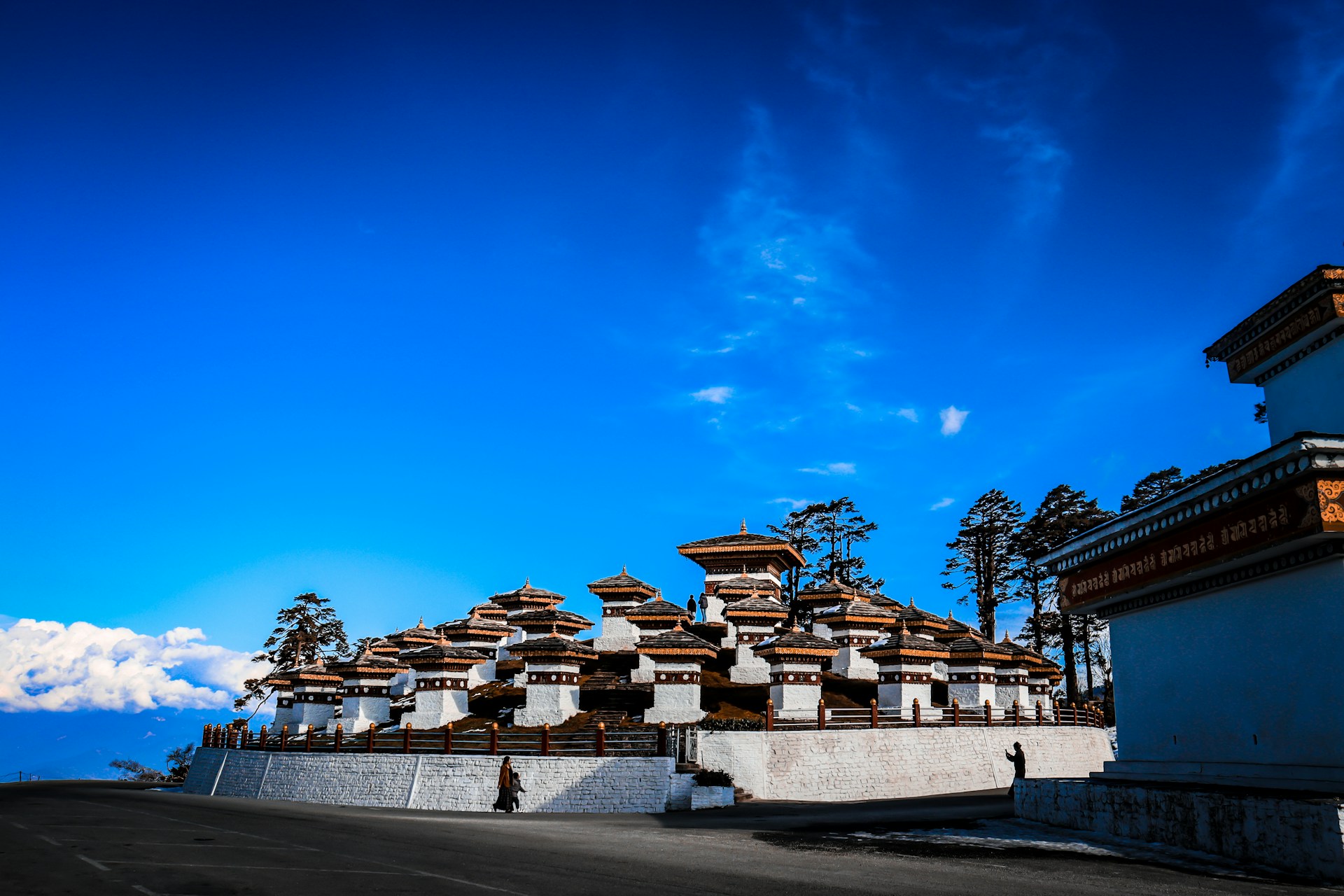
Dochula Pass is one of Bhutan’s most scenic and spiritual mountain passes, located at an altitude of 3,100 meters (10,200 ft) between Thimphu and Punakha. The pass is famed for its 108 chortens (stupas), known as Druk Wangyal Chortens, built in honor of Bhutanese soldiers. Surrounded by alpine meadows and panoramic Himalayan vistas, Dochula offers a peaceful stop for travelers, often shrouded in mist and clouds, especially during the monsoon. On clear days, the pass offers breathtaking views of snowcapped peaks, including Gangkar Puensum—the world’s highest unclimbed mountain. It's a perfect blend of natural beauty and spiritual symbolism.
Location of Dochula Pass
Dochula Pass is located about 30 kilometers (1 hour drive) from Thimphu, on the highway toward Punakha. It sits at a strategic point where travelers ascend out of the capital’s valley and into higher elevations. The pass is a popular stop for both tourists and locals, especially in spring when the area is adorned with blooming rhododendrons. Its location offers stunning views over the Lungchutse and Himalayan ranges and is often used as a midway viewpoint during west-central Bhutan tours. The site’s spiritual presence, combined with panoramic scenery, makes it one of the most visited natural landmarks in Bhutan.
Cultural and Religious Importance
The 108 chortens at Dochula were commissioned by Her Majesty Ashi Dorji Wangmo Wangchuck, the Queen Mother of Bhutan, in memory of the Bhutanese soldiers who lost their lives in a 2003 military operation. These stupas symbolize peace, sacrifice, and national unity. Next to the chortens is the Druk Wangyal Lhakhang, a modern temple built in traditional style, dedicated to the Fourth King. It is decorated with murals that uniquely blend modern Bhutanese history with Buddhist symbolism. Religious ceremonies are occasionally held here, and travelers often offer prayers or light butter lamps to pay respects and seek blessings.
Travel Experience and Accessibility
Dochula Pass is easily accessible by road and makes for a scenic rest stop on the way to Punakha. Tour vehicles typically pause here for photography, short walks, or even picnic breaks. There’s a café nearby offering tea and snacks, allowing travelers to relax and take in the Himalayan panorama. Early mornings offer the clearest mountain views, while foggy afternoons provide a surreal, mystical experience. Though no hike is required to reach Dochula, energetic visitors can trek to Lungchutse Monastery from the pass (2–3 hours round trip), which offers even more incredible views and a serene forest trail experience.
Historical Background of Dochula Pass
While Dochula Pass has long served as a vital connector between western and central Bhutan, its fame grew after the construction of the Druk Wangyal Chortens in the early 2000s. The site commemorates the victory of the Bhutanese Royal Army during the 2003 operation against insurgents along the southern border. It stands as a national symbol of peace, resilience, and royal leadership. The Druk Wangyal Festival, celebrated here annually in December, showcases Bhutanese cultural performances and honors the sacrifices of the soldiers. These developments have turned Dochula from a simple mountain pass into a revered national landmark.
Monks and Ritual Practice
While Dochula Pass is not a residential monastery like Tiger’s Nest, it still holds significant religious value. The Druk Wangyal Lhakhang nearby is occasionally used for special rituals, prayers, and festival events conducted by monks. During auspicious dates or public holidays, local Bhutanese and monks visit the pass to perform ritual offerings, spin prayer wheels, and circumambulate the chortens. The sacred energy of the place, elevated by its high-altitude setting and spiritual symbolism, makes it a popular spot for reflection, prayer, and religious photography. Visitors often light butter lamps or make small offerings to honor loved ones or ancestors.
Natural Environment Around Dochula
Dochula is surrounded by lush alpine vegetation, particularly pine forests, rhododendron groves, and dwarf bamboo. During spring (March to May), the entire hillside is awash in vivid blooms, turning the pass into a natural garden in the clouds. The cool, crisp air and sweeping mountain winds create a peaceful ambiance, while birdsongs echo through the trees. The nearby Lungchutse Nature Trail offers hikers a serene journey through ancient forest paths. On clear days, visitors are rewarded with 180-degree views of the Himalayan snow peaks, while foggy days offer a mystical, meditative landscape. It’s a perfect blend of nature, silence, and soulfulness.
Phobjikha Valley
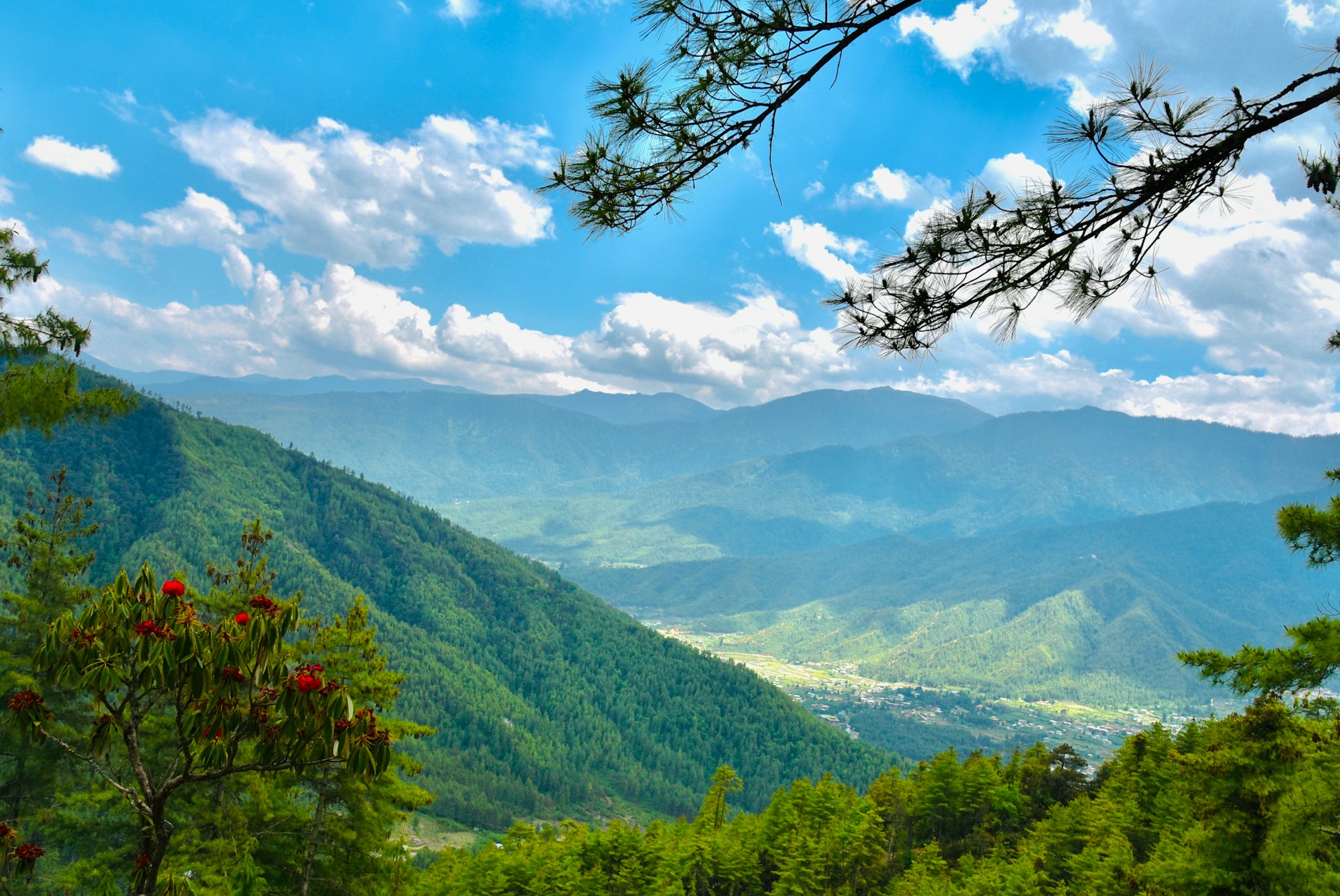
Phobjikha Valley, often called the "Valley of the Black-Necked Cranes," is a stunning U-shaped glacial valley located in central Bhutan. It is one of the most beautiful and tranquil natural landscapes in the country, surrounded by rolling meadows, thick pine forests, and mist-covered mountains. Unlike many other valleys in Bhutan, Phobjikha is completely free from urbanization—there are no power lines cluttering the sky, as electricity is routed underground to preserve its pristine charm. The flat valley floor makes it unique in a country dominated by rugged terrain, and it's perfect for slow travel, photography, and connecting with nature.
Location of Phobjikha Valley
Phobjikha Valley lies in the Wangdue Phodrang District, at an altitude of about 3,000 meters (9,840 feet) above sea level. It is accessible via a 2–3 hour drive from Punakha or Wangdue town, passing through dense forests and winding mountain roads. The journey itself is scenic and serene, culminating in the sudden opening of the valley into a vast expanse of green meadows. The village of Gangtey, home to the famous Gangtey Monastery, sits on a hilltop overlooking the valley. Despite its remoteness, Phobjikha is a well-loved destination on most Bhutan tour packages for nature lovers and birdwatchers.
Cultural and Spiritual Importance
Phobjikha Valley is not only a haven for nature but also a spiritually significant region. At the heart of the valley is the Gangtey Goempa (Gangtey Monastery), a revered Nyingma monastery established in the 17th century. It is one of the main centers of Vajrayana Buddhism in Bhutan and hosts annual religious festivals such as the Gangtey Tshechu. Monks and locals gather here for sacred rituals, masked dances, and community prayers. The valley is deeply associated with Guru Rinpoche’s teachings, and many pilgrims visit to meditate or circumambulate the monastery. The co-existence of spirituality and nature makes Phobjikha a soulful retreat.
Nature Trails and Hiking in Phobjikha
Phobjikha offers gentle and scenic hikes ideal for all levels. The most popular is the Gangtey Nature Trail, a 2-hour walk that meanders through pine forests, open fields, and small villages. It provides panoramic views of the valley and is especially rewarding in early morning or late afternoon light. Birdwatchers and photographers love this trail, particularly in the winter months (late October to February) when the endangered black-necked cranes arrive from Tibet. Other hiking options include trails to nearby meditation caves or through traditional farmlands. These walks offer insight into rural Bhutanese life and allow for a peaceful, immersive experience.
Historical Significance of Phobjikha
Historically, Phobjikha was a seasonal settlement for herders and a spiritual retreat for monks. Its isolation preserved traditional ways of life, untouched by outside influence. The foundation of Gangtey Monastery in the 17th century elevated its spiritual status. Over the centuries, it has remained a stronghold of the Pema Lingpa lineage and Nyingma Buddhist practice. In the modern era, Phobjikha gained further prominence due to its conservation efforts for the black-necked cranes, making it both a cultural and ecological heritage site. Despite development, the valley has retained its timeless atmosphere, making it a historical gem on any Bhutan itinerary.
Monastic Life in the Valley
Monks at Gangtey Monastery maintain a serene and disciplined life dedicated to meditation, rituals, and education. The monastery serves as a monastic school for young boys who aspire to become monks. Their day begins with prayers at dawn, followed by teachings, chores, and spiritual study. Visitors may witness monks chanting in unison, lighting butter lamps, or performing intricate ritual dances during festivals. The simplicity and devotion of their lifestyle reflect the spiritual purity of the valley. Guests are encouraged to interact respectfully and often leave with a deeper appreciation for Bhutan’s unique blend of Buddhism and everyday life.
Natural Environment of Phobjikha
Phobjikha is one of Bhutan’s most ecologically rich environments. Its flat valley floor is a glacial basin filled with marshes, dwarf bamboo, and wildflower meadows. The surrounding forests are home to deer, foxes, Himalayan black bears, and over 200 bird species. The valley is most famous for hosting over 500 black-necked cranes every winter, which are revered by locals and protected through national conservation efforts. The clean air, peaceful silence, and natural rhythms of the valley make it a sanctuary for both wildlife and visitors. The area is also recognized as an Important Bird Area (IBA) by BirdLife International.
Visitor Experience in Phobjikha
A visit to Phobjikha is often described as soul-healing. Unlike the more bustling cities of Paro and Thimphu, the valley offers solitude and slow travel. Accommodations range from cozy farmhouses to boutique lodges with valley views. Visitors enjoy exploring quaint villages, tasting local cheese, attending cultural festivals, and watching cranes dance gracefully across the marshes. Photography enthusiasts find endless inspiration in the changing light, misty mornings, and sweeping landscapes. The peacefulness here encourages reflection and mindfulness, making it a favorite among spiritual seekers and nature lovers. Phobjikha isn’t just a stop—it’s an experience that stays with you long after your journey ends.
Haa Valley
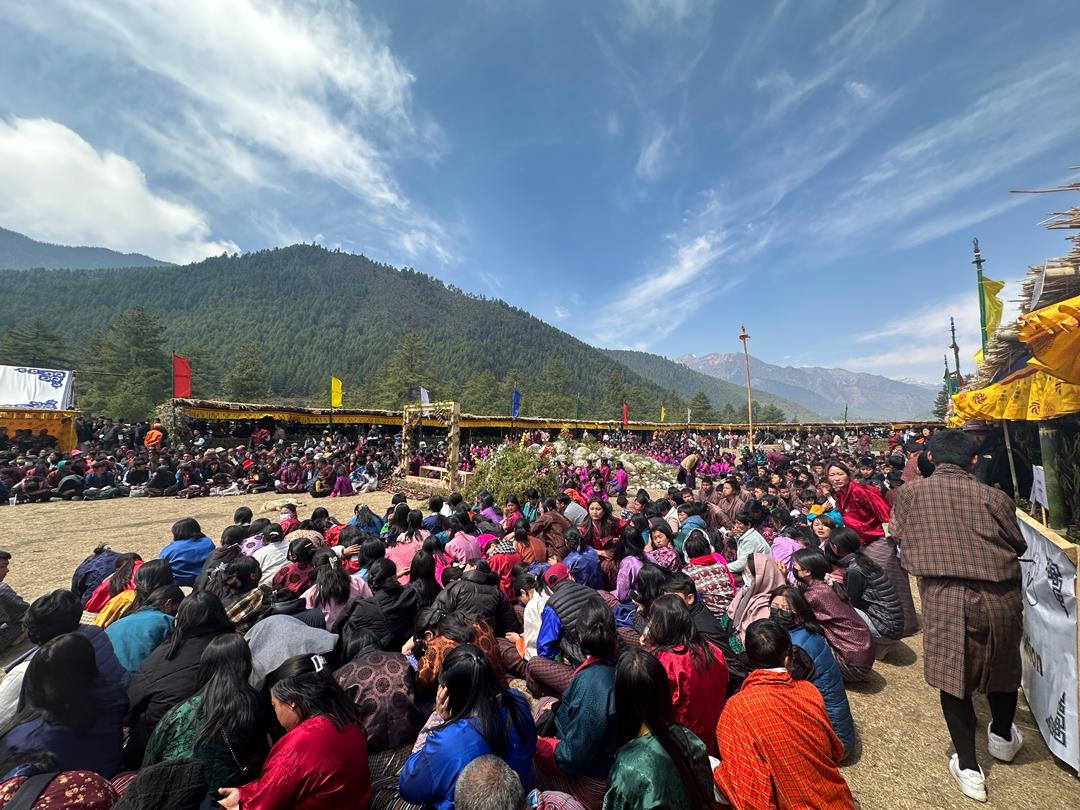
Haa Valley is one of Bhutan’s most remote and least-visited regions, offering raw Himalayan beauty and deep cultural authenticity. Tucked away in the westernmost part of the country, the valley is surrounded by snow-capped peaks, dense alpine forests, and terraced farmlands. It is known for its untouched charm, traditional Bhutanese homes, and tranquil atmosphere. Unlike more developed regions, Haa remains quiet, secluded, and spiritually rich, making it ideal for travelers seeking a genuine, off-the-beaten-path Bhutan experience. The valley’s simplicity, combined with its scenic backdrop, makes it a hidden treasure for nature photography, cultural exploration, and peaceful retreats.
Location of Haa Valley
Haa Valley is located in western Bhutan, bordering Tibet, and is approximately 65 kilometers (2.5–3 hours) from Paro, accessible via the scenic Chele La Pass—Bhutan’s highest motorable road at 3,988 meters. The road journey offers spectacular views of Mount Jomolhari and sweeping valleys. Nestled between the districts of Paro and Samtse, Haa has only recently opened to tourism, preserving its quiet charm. The region’s remoteness and minimal development add to its appeal for slow travelers and cultural explorers. With fewer tourists, it provides an intimate experience of Bhutanese highland life amidst dramatic natural surroundings.
Cultural and Religious Importance
Haa Valley holds deep spiritual significance, particularly as the home of the sacred White and Black Temples (Lhakhang Karpo and Lhakhang Nagpo), believed to have been built in the 7th century by Tibetan King Songtsen Gampo. These temples represent spiritual duality and are revered pilgrimage sites for Bhutanese. Haa is also the heartland of Ap Chhundu, the valley’s protective deity, honored with local rituals and festivals. Traditional festivals like Haa Summer Festival showcase local customs, yak herding culture, and folk traditions. For spiritual travelers, Haa offers a unique connection to Bhutan’s indigenous beliefs, blending animism, Buddhism, and ancestral worship.
Natural Environment of Haa Valley
The natural landscape of Haa Valley is defined by alpine forests, fast-flowing rivers, and snow-covered peaks. The valley remains largely undeveloped, which has helped conserve its ecological purity. It is home to a variety of Himalayan flora and fauna, including rhododendrons, blue pine, and rare birds. The fresh mountain air, unpolluted environment, and peaceful silence make Haa ideal for nature walks, photography, and meditation. Agricultural terraces and yaks grazing in meadows add to the pastoral charm. During winter, the valley transforms into a snowy wonderland, while summer brings lush greenery, wildflowers, and vibrant skies perfect for exploration.
Visitor Experience in Haa Valley
Visiting Haa Valley is like stepping into a timeless Bhutan, untouched by mass tourism. Visitors can stay in traditional farmhouses, enjoy authentic Bhutanese meals, and interact with hospitable locals who live simple, grounded lives. Highlights include exploring the Black and White temples, hiking to Juneydrak Hermitage, and walking through serene villages. The Haa Summer Festival provides an intimate view into highland customs, featuring traditional sports, music, and yak-based cultural showcases. The valley’s isolation, scenic beauty, and cultural depth offer a truly immersive experience for travelers seeking authenticity, peace, and a connection to Bhutan’s spiritual heartland.
Bumthang Valley
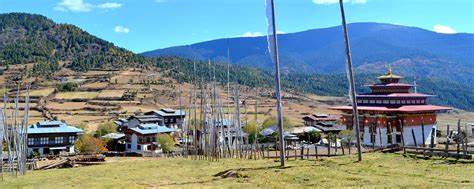
Known as the spiritual heartland of Bhutan, Bumthang Valley is a lush, high-altitude region filled with sacred monasteries, fertile farmlands, and serene rivers. Located in central Bhutan, it is actually a collection of four valleys—Chokhor, Tang, Ura, and Chhume—each with its own cultural and scenic charm. Bumthang is home to some of the oldest temples and monasteries in the country, making it a hub for Buddhist pilgrims and cultural enthusiasts. The landscape is picturesque, with rolling hills, apple orchards, buckwheat fields, and forested slopes. Its peaceful rhythm and historical richness make Bumthang a must-visit for those seeking authentic Bhutanese culture and tranquility.
Location of Bumthang Valley
Bumthang Valley is situated in central Bhutan, about 260 km east of Thimphu and can be reached by a domestic flight to Bathpalathang Airport or by a scenic drive through mountain passes. Surrounded by the Black Mountains and lush alpine forests, it sits at an average altitude of 2,600 meters (8,500 feet). The valley is relatively flat compared to other Himalayan regions, making it ideal for easy walking tours and bike rides. Despite its remoteness, Bumthang is well-connected via road networks and is often included in extended Bhutan tour itineraries, especially those over 8 to 14 days.
Cultural and Religious Importance
Bumthang is often referred to as Bhutan’s most sacred valley, steeped in legends and home to countless monasteries, temples, and holy sites. It was here that Guru Rinpoche (Padmasambhava) is believed to have cured a local king and introduced Buddhism in the region. Sacred sites include Jambay Lhakhang, Kurje Lhakhang, and Tamshing Monastery, each holding deep spiritual value and centuries-old murals. The valley hosts vibrant festivals such as the Jambay Lhakhang Drup, known for its fire rituals and masked dances. For pilgrims and spiritual travelers, Bumthang offers a profound connection to Bhutan’s Buddhist roots and sacred geography.
Natural Environment of Bumthang
Bumthang boasts a unique combination of spiritual serenity and natural beauty. The valley is characterized by fertile farmlands, apple orchards, buckwheat fields, and clear glacial rivers like the Chamkhar Chu. The surrounding hills are covered in blue pine, spruce, and rhododendron forests, home to Himalayan birds, deer, and other wildlife. With its high altitude and seasonal diversity, Bumthang offers stunning scenery in all seasons—spring blooms, autumn colors, and snow-covered winters. Eco-conscious visitors can enjoy scenic hikes, nature trails, and farmhouse experiences that blend seamlessly with the region’s agricultural and monastic lifestyle.
Visitor Experience in Bumthang Valley
Visitors to Bumthang often describe it as the most peaceful and enriching part of their Bhutan journey. The valley offers a perfect balance of cultural immersion and scenic exploration. Travelers can stroll through village paths, visit ancient monasteries, enjoy local delicacies like buckwheat pancakes, cheese, and apple cider, or relax at a riverside lodge. For the spiritually inclined, meditating at sacred sites or attending local rituals provides an unmatched sense of calm. Bumthang also offers homestays and farm lodge experiences, allowing guests to live like locals. It’s a perfect destination for slow travel, spiritual retreat, and cultural discovery.
FAQs
1. Q: What is the best time of year for nature photography in Bhutan?
A: The best time for nature photography in Bhutan is during spring (March to May) and autumn (September to November). Spring offers blooming rhododendrons and lush greenery, while autumn provides clear skies, golden forests, and panoramic Himalayan views. These seasons are ideal for capturing vibrant colors and dramatic landscapes.
2. Q: Can I photograph the Tiger’s Nest Monastery from inside?
A: Photography is not allowed inside the Tiger’s Nest Monastery, but you can take stunning photos from the trail and viewpoints along the way. The best shots are captured from the cafeteria viewpoint or the final staircase, especially during sunrise or sunset.
3. Q: Are drones allowed for photography in Bhutan?
A: Drones are strictly regulated in Bhutan. You must obtain permission from the Bhutan Civil Aviation Authority (BCAA) and relevant government bodies. Unauthorized drone use is prohibited, especially near monasteries, dzongs, and protected areas.
4. Q: Do I need a special permit for photographing in nature reserves like Phobjikha Valley?
A: No special permit is required to photograph in Phobjikha Valley or other nature reserves. However, always respect local customs and wildlife. During the black-necked crane season, maintain distance and avoid flash photography to prevent disturbing the birds.
5. Q: Are local guides helpful for photography tours in Bhutan?
A: Yes, local guides are invaluable for nature photography tours in Bhutan. They know the best angles, times of day, and hidden spots, and can help you navigate local etiquette and gain access to less-traveled areas with rich natural beauty.
